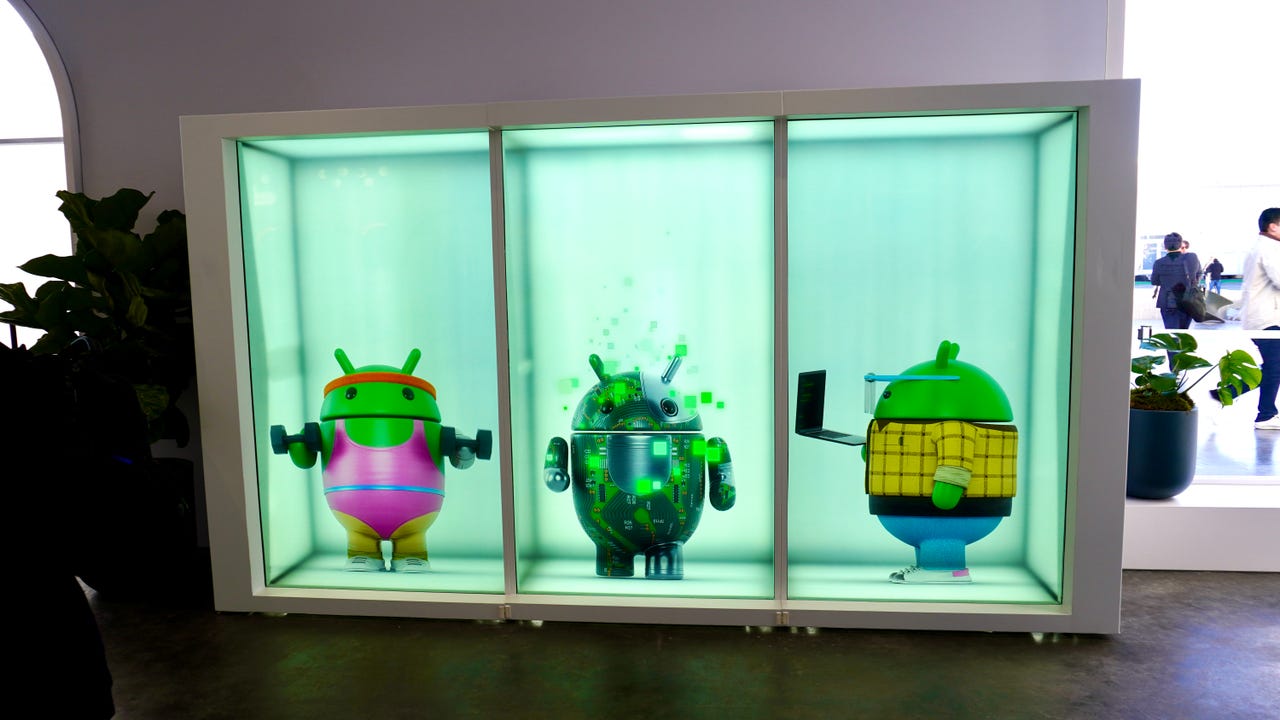
Sabrina Ortiz/ZDNET
Tech companies often look to Mobile World Congress (MWC) as a launch point for their latest mobile innovations, hardware and software included. For Android users, Google is doing just that this week, announcing several new features to elevate its Android phones, tablets, Wear OS smartwatches, and even Android Auto experience.
Also: 3 reasons why I’m excited for Mobile World Congress 2024 (even if I shouldn’t be)
Of course, many of the features leverage what will easily be the star of this year’s event, AI. Read on for the full roundup of all the latest features coming to Android and when you can expect them.
1. Access Gemini right in Google Messages
Since Gemini can produce high-quality text for nearly every circumstance you can think of, you might already be using it to write texts for you, copying and pasting them from the chatbot and into your Google messages. Now, you can get the assistance you want right from your Google Messages app.
Also: The best AI chatbots of 2024: ChatGPT and alternatives
Available in beta in English, starting this week you can use “Chat with Gemini” to help with drafting messages, or if you prefer to use the chatbot for its creative purposes, you can also leverage it to brainstorm ideas, plan events, get answers, and more.
2. AI in Android Auto for safer driving
As much as having a smartphone mirroring system in your car can be helpful for driving, some activities like reading and responding to text messages are still distracting or not optimized for safe driving. Google is attempting to solve this problem by implementing AI into Android Auto, which can now summarize long texts and busy group chats while you are focused on the road, and suggest relevant responses. For example, you can send a suggested response of your ETA by simply tapping one of the populated choices.
3. New accessibility features
Members of the blind and low-vision communities will now be able to hear auto-generated AI descriptions of photos and online images via Lookout.
Also: How Google Lookout’s AI can describe images for the visually impaired
Google is also adding enhanced screen reader support for Lens in Maps, which helps users explore the area around them simply by pointing their phone. Users can also point their camera and TalkBack will read relevant information out loud including names of places, operating hours, ratings, and directions.
4. Markup your Google Docs with handwritten notes
Sometimes, adding comments on Google Docs isn’t as efficient as writing a quick note. The good news is that now, with an Android phone or tablet, you can. All you have to do is use your finger or stylus to make the annotation you want with a selection of markup tool options such as different pen colors and highlighters.
5. New casting controls for Spotify
For some time, Android devices have supported quick device switching right on the lock screen when playing YouTube Music. Now, the same feature is coming to Spotify. A new output switcher will let you easily toggle between listening on your headphones, smart speakers, TV, and more.
6. View fitness data from different wearables in one place
The redesigned Fitbit app through Health Connect on Android lets you view your data from different wearables and apps, including AllTrails, Oura Ring, and MyFItnessPal, all in one place.
Also: Sorry, Oura and Samsung: Apple Ring reportedly ‘imminent’
The data from the connected apps will be accessible through the “You” tab. You can access all your data collected from Health Connect-compatible apps, such as exercise, steps, and calories burned, in the “Today” tab.
7. Wear OS updates with commuters in mind
The big change coming to Wear OS will benefit commuters and frequent travelers the most. Now, on top of boarding passes on Google Wallet, users can access compass-guided directions right on their watch for a more seamless traveling experience. Public transit directions for Google Maps is also coming to Wear OS, including real-time departure tracking.